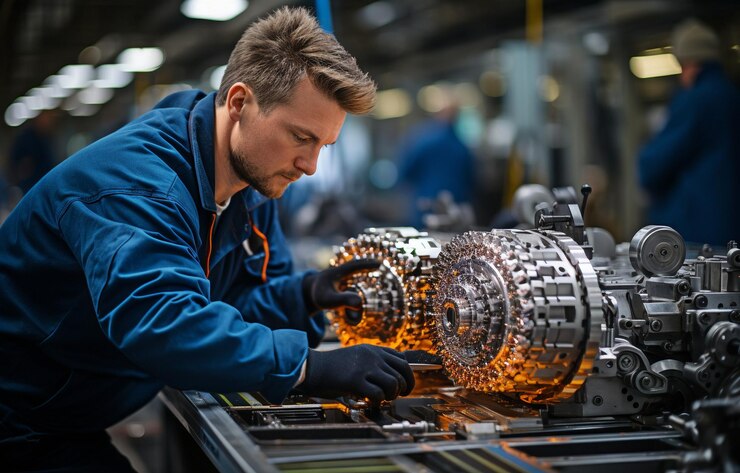Enhancing Production Efficiency:
High-speed milling significantly boosts production efficiency in the automotive industry by reducing machining time and increasing the speed of operations. This technology allows manufacturers to produce complex parts quickly and accurately, leading to shorter production cycles and increased throughput. As a result, high-speed milling helps automotive companies meet tight production deadlines and improve overall productivity.
Achieving High Precision and Quality:
The precision offered by high-speed milling is crucial for manufacturing automotive components that require tight tolerances and high-quality finishes. This technology ensures consistent accuracy, which is essential for parts that must fit together perfectly. High-speed milling machines can produce smooth surfaces and intricate details, enhancing the performance and aesthetics of automotive parts.
Reducing Tool Wear and Maintenance Costs:
High-speed milling reduces tool wear and maintenance costs due to its efficient cutting process. The technology minimizes the heat generated during machining, which extends the lifespan of cutting tools. By reducing tool wear, manufacturers can lower maintenance expenses and minimize downtime, leading to cost savings and uninterrupted production.
Flexibility in Material Machining:
High-speed milling is versatile and capable of machining a wide range of materials used in the automotive industry, including aluminum, steel, and composites. This flexibility allows manufacturers to produce various components, from engine parts to body panels, using the same technology. The ability to machine different materials efficiently makes high-speed milling an invaluable asset in automotive manufacturing.
Integration with Advanced Technologies:
The integration of high-speed milling with advanced technologies such as computer-aided design (CAD) and computer-aided manufacturing (CAM) enhances its capabilities. These integrations enable precise control over the machining process, allowing for the production of complex geometries and customized components. The combination of high-speed milling with digital technologies ensures optimal performance and innovation in automotive manufacturing.
Supporting Lightweight Vehicle Design:
High-speed milling supports the trend towards lightweight vehicle design by enabling the efficient machining of lightweight materials such as aluminum and composites. These materials help reduce the overall weight of vehicles, leading to improved fuel efficiency and reduced emissions. High-speed milling’s ability to handle lightweight materials effectively is crucial for developing modern, eco-friendly vehicles.
Sustainability and Environmental Impact:
High-speed milling contributes to sustainability in the automotive industry by reducing energy consumption and waste. The efficiency of the milling process lowers the amount of energy required for machining, while the precision minimizes material waste. By adopting high-speed milling, automotive manufacturers can align with environmental goals and promote sustainable practices.
Conclusion:
High-speed milling offers numerous benefits in the automotive industry, including enhanced efficiency, precision, tool longevity, material flexibility, integration with advanced technologies, support for lightweight design, and sustainability. By leveraging these advantages, automotive manufacturers can produce high-quality components quickly and cost-effectively.




